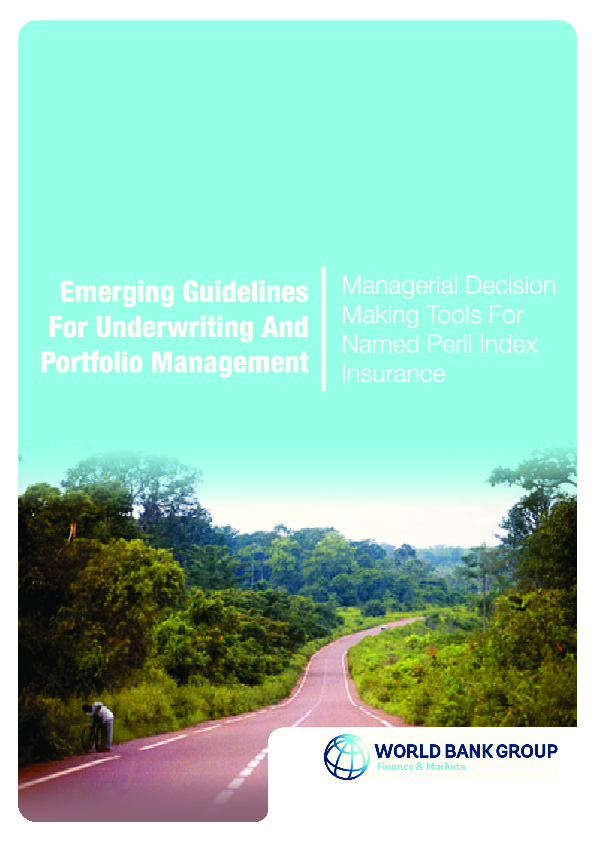Emerging Guidelines For Underwriting And Portfolio Management

The course topics include critical concepts in named peril index insurance and essential knowledge and tools. Specifically, the part 2 – essential knowledge and tools include but not limited to fundamentals of risk modeling and decision making, basic opportunity assessment, base index product evaluation, product pricing, redesigned index product evaluation, detailed market analysis, and value of insurance to a financier.
By the end of the course, participants will be able to 1) appreciate the need for and use of risk modeling and risk metrics in managing index insurance portfolios; 2) appreciate how risk metrics enable underwriting department objectives to be translated into measurable statistics; 3) Understand the product sustainability appraisal tree (PSAT) and use it to develop key risk metrics for each product process. 4) Understand and apply risk scoring techniques for risk reduction and market expansion; 5) Fully understand key decision metrics required from actuarial analysts; these metrics should be discussed with the insurance manager at each stage of the product and portfolio management process; 6) appreciate the role of risk metrics in bringing transparency and ensuring that final decisions are not delegated to people without appropriate authority; 7) appreciate the role of risk management committee guidelines and how they are used at each stage of the product process; 8) Use risk management committee guidelines to make optimal decisions within a short time for each of the following strategic areas: product evaluation, product pricing, market analysis and value of insurance analysis; 9) understand why reserving for named peril index insurance may be different from other traditional general insurance classes.
The Guidelines is based on materials from the book - "Risk Modeling for Appraising Named Peril Index Insurance Products." Click here to know more about the book.
